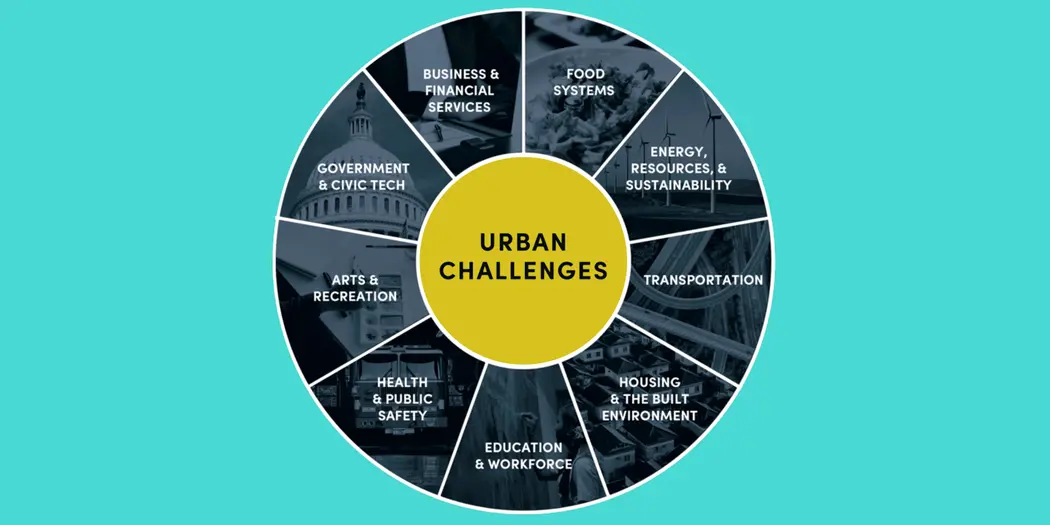Credit: Stephen Sauer
“What is the city but the people?”
“True, the people are the city.”
So wrote Shakespeare four centuries ago in Act 3 of Coriolanus. But isn’t the infrastructure also the city? And what about its services? What about its arts and culture and the kinds of work that it offers?
These are questions for Clara Brenner, a 2012 graduate of MIT Sloan who cofounded and is managing partner at Urban Innovation Fund. “We’re a VC fund based in San Francisco that provides seed capital and regulatory support to entrepreneurs solving tough urban challenges,” she said in a recent webinar. “And when we say ‘urban challenges’ we mean the kinds of problems that mayor’s offices across the country care about.”
Brenner used the 40-minute discussion to detail how she started in this space and the way she has shaped and refined her investment strategy over the past several years. Below are three insights from her talk.
Building a novel investment thesis
In the summer of 2011, while interning at a startup in San Francisco, Brenner watched startups like Lyft and Airbnb get off the ground. “I had the sense that these companies were solving interesting challenges in cities and scaling in ways that you don’t typically see with community organizations,” she said. She and her fellow alumna, Julie Lein, decided to study these kinds of companies. The work revealed two insights that eventually led to the cofounding of Urban Innovation Fund.
First, companies working in this realm present a distinct kind of risk. They often depend on physical components (docking bays for a bike share) and they operate in novel spaces, like the sharing economy. “Traditional investors get excited about these ideas, but they often want to see traction before taking a risk,” Brenner said. This means many city-focused companies struggled to raise early-stage capital.
Second, ventures in this space face significant regulatory and political hurdles — think Uber. Success thus depends on smart and active political engagement along with deep knowledge of regulatory mandates. It became clear to Brenner and Lein that “no one was investing in this space in a concerted manner and definitely nobody was giving good regulatory and political advice.” Given about 80% of Americans live in cities and two-thirds of the global population is expected to live in cities by 2050, the opportunity was obvious.
Finding a promising investment
Urban Innovation Fund looks at investments in nine areas:
Urban Innovation Fund seeks companies that work in one of nine “urban challenge” areas.
Within each of these, two types of deals “excite us,” Brenner said. First are high-profile companies in sectors with formidable regulatory hurdles, like transportation. “Those are the cases where our legal assistance is a value-add that helps us fight our way into competitive deals,” she said.
Second are companies that work in “unsexy areas” like water or workforce, where the potential for innovation and growth are broadly overlooked. “Paying attention to these sectors helps us recognize value really early,” Brenner said.
Prior to this filtering, however, is an aggressive open-mindedness. “We try not to be prescriptive in what we’re looking for,” she said. “There are so many amazing entrepreneurs coming up with amazing ideas that we would never think of in advance.” To this end, Urban Innovation Fund carefully tracks every deal that comes across its table, whether an in-person meeting, an email, or a tweet. Their first investment round winnowed more than 4,000 prospects down to 28 investments. Nor do they discriminate geographically. “No city or region has a monopoly on good, urban ideas,” Brenner said.
Measuring outcomes
How does Urban Innovation Fund track its portfolio’s performance? Brenner and Lein first tried using an impact assessment from B Lab, the non-profit organization that certifies “B Corporations” that B Lab believes have a positive social and environmental impact. But “it was a total failure because it wasn’t relevant to us as investors or operators,” she said. The questions B Lab asked didn’t suit the kinds of companies Urban Innovation Fund supported. “So we created our own outcomes report.”
They first survey the companies in their portfolio with general questions about team and board demographics, the types of jobs being created (full-time, part-time), what kinds of benefits are offered, and so on. They then choose roughly three statistics that a company is already tracking and that are specific to that company’s success; these are used to measure year-over-year performance. “If the metrics are core to that business, and if they’re doing well on those metrics, then they should be doing well as a business,” Brenner said.
Coda: About the companies
So where does Urban Innovation Fund’s investing philosophy lead it? Here are three startups from the fund’s portfolio.
Catch — A personal benefits and retirement-savings platform for workers in the gig economy.
Voatz — A mobile voting platform designed to make elections more accessible and secure.
Milkstork — A breast milk shipping company for breastfeeding moms who travel for work.




